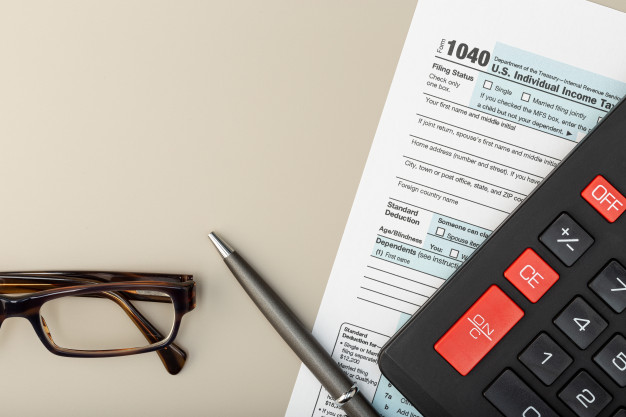

OTB systems comprise on-hand and in-hand physical inventory and any pending sales. Unsold stock and lost income may result from excess winter clothing, particularly as seasons change and stores refill with a fresh, seasonal inventory. Obsolete inventory, often known as deadstock, is unsold inventory. A company’s inventory can fluctuate drastically especially before and after holidays or big sales.
Your company should be able to stay in the black with a well-balanced demand and supply chain. While calculating inventory turnover ratio, use average inventory instead of closing inventory. The reason being, a company’s inventory levels fluctuate widely. Especially during holiday seasons or for the companies which are cyclic in nature. Inventory turnover ratio can be used to determine how fast a company is selling its inventory and its efficiency can be compared against industry standards.
- Its inventory balance at the beginning of the fiscal year was $600,000 & at the fiscal year end amounts to $500,000.
- ClearTax serves 1.5+ Million happy customers, 20000+ CAs & tax experts & 10000+ businesses across India.
- 2022, ABC reported cost of sales of $429 billion and year-end inventory of $56.5 billion, up from $44.9 billion a year earlier.
- A company’s profitability is directly linked to how quickly it can sell its inventory.
The inventory turnover ratio determines the financial health of an organization. Supply, demand, profit, or loss, along with internal functioning, are all factors indicating the future of your company. But a good inventory turnover ratio is essential to determine a brighter financial health of an organization.
Tips to Optimize Inventory Turnover Ratio
Next, you can buy less stock and audit more often than purchasing a stock for an extended period and storing it. If the inventory is fast-moving, you can re-stock products, and if it is not, you can just get rid of the existing stock. When it comes to inventory the Pareto, principle applies to a lot of areas in business. It means 80% of company’s sales revenues are likely generated by 20% of the SKU’s. Now say finished goods worth of 1,20,000 was sold for Rs. 1,00,000.
We can calculate it by subtracting gross profit from the selling price. Inventory turnover ratio is a financial ratio that indicates how many times a company’s inventory has been sold and replaced in a given period. The number of days it takes to sell the inventory on hand may then be determined using the inventory turnover formula and the number of days in the period. A higher inventory turnover ratio means you’re selling more products and generating greater revenue in a given period of time. As when inventory stays in your warehouse, it doesn’t generate revenue but incurs costs— higher maintenance and carrying costs. The slower you’ll clear your inventory, the higher these costs.
How the Inventory Turnover Ratio is Calculated?
The company is unable to sell its inventory once in the entire year. It won’t have the funds to launch new products or spend on marketing. With high cash flow, it can launch new bikes, inventory turnover ratio formula expand overseas etc. The frequency at which he sells the cakes is his inventory turnover ratio. He has to maintain a high turnover ratio as customers will not buy stale cakes.
These information are the key game-changing insights for any business model. Having a solid knowledge on your inventory turn, allows you to stay on top of your game in making right decisions for carrying the correct amount of inventory at the correct time. SalesBabuCRM is an efficient cloud based inventory management tool to help you with analyzing your product requirements and manage your inventory. Many merchants order small quantities of inventory to keep their inventory levels high and incur the greater cost for the business. Transportation expenses come to a higher value for repetitive and small orders. Also, merchants who order small quantities often ,miss out on the bulk discounts and special deals on high volume purchases.
In such cases, thorough demand forecasting can help ensure that you don’t run out of your products very soon. If the product is selling out very fast and replenishing will take time, it is intelligent to make fewer sales for a while. The negative customer experience is more dangerous than a few days of no sales.
In some cases, you need a faster delivery or more quantity in place of costs. You should know how to maintain a balance between costs and reliability. Streamlining the supply chain process can benefit your business. ABC Textiles is a textile manufacturer specialising in menswear. In the fourth quarter, Q4, which is its busiest quarter, the COGS of the business was INR 50,000, and the average inventory was INR 5,000. Using the inventory turnover formula, we have to divide INR 50,000 by INR 5,000.
There may also be a case where you may incur a loss on sale of inventory. Then, in that case, the cost of goods sold is derived by adding the gross loss to the cost of goods sold. This is because net profit includes indirect expenses that cannot be attributed to an inventory. Stocking a large number of items that don’t sell quickly could also mean that you end up with a warehouse full of obsolete products and don’t have enough storage for the latest products. It is only when inventory goes out of your business, you make profit.
The items given or inadequate marketing could be the cause of such a predicament. Calculating inventory turnover can help businesses for making better decisions about pricing, production, marketing, and inventory purchases. Inventory Days and Inventory Turnover Ratio are some common ratios that an investor should look upon. Inventory turnover and open-to-buy systems – Evaluate if your company’s inventory management procedures include an “open-to-buy” approach.
How do you calculate inventory turnover on a balance sheet?
- Cost of goods sold / average inventory = inventory turnover rate.
- (Quantity of goods sold / quantity of goods on hand) x 100 = sell-through rate.
- (Average inventory / cost of goods sold) x 365 = days of inventory.
Dozens of variables influencing demand and inventory must be accounted for in your OTB procedure as they occur. It must be flexible enough to make quick adjustments when necessary. Pay 20% upfront margin of the transaction value to trade in cash market segment. The author is a Certified Financial Planner with 5 years experience in Investment Advisory and Financial Planning. Her strength lies in simplifying complex financial concepts with real life stories and analogies. Her goal is to make common retail investors financially smart and independent.
For instance, with a higher inventory turnover ratio, you can store 3,000 units in a warehouse which can store 1,000 units at a time. This way, you can keep costs down and achieve higher profits. However, there are instances when a high inventory turnover ratio may not be good for your business.
Fundamental Accounting
Low sales and maybe surplus inventories are indicators of a slow turnover ratio. Furthermore, a higher ratio suggests higher sales or a lack of inventory. High-volume, low-margin industries like retail and supermarkets have the largest inventory turnover. The information, product and services provided on this website are provided on an “as is” and “as available” basis without any warranty or representation, express or implied. Khatabook Blogs are meant purely for educational discussion of financial products and services. Khatabook does not make a guarantee that the service will meet your requirements, or that it will be uninterrupted, timely and secure, and that errors, if any, will be corrected.
How is inventory turnover ratio calculated?
The inventory turnover ratio is calculated by dividing the cost of goods by average inventory for the same period. A higher ratio tends to point to strong sales and a lower one to weak sales.
The inventory turnover ratio can be calculated by calculating the cost of goods sold and average inventory. The following illustration will help in understanding the concept better. Improved marketing strategies help in improving overall inventory ratio.
What is the inventory turnover ratio?
XYZ Company has cost of goods sold amounting to $5M for the current fiscal year. Its inventory balance at the beginning of the fiscal year was $600,000 & at the fiscal year end amounts to $500,000. 2022, ABC reported cost of sales of $429 billion and year-end inventory of $56.5 billion, up from $44.9 billion a year earlier.
How to calculate stock ratio?
Stock to sales ratio = Average stock value / Net sales value
This can be turned into a percentage by multiplying it by 100. To calculate average stock value, simply add your beginning inventory value and ending inventory value together, and then divide that sum by 2.
Another reason to look at inventory turnover is to compare a company to others in the same industry. Companies measure their operational efficiency by seeing if their inventory turnover is on pace with, or even exceeds, the industry standard benchmark. Add the inventory on hand at the start of a given time frame to the inventory on hand at the end of a given time frame. Once you add them and get the total amount, divide them by two to get the average inventory. This information is useful to shareholders and business analysts, because the turnover ratio indicates the company’s ability to sell its products.
Share this with your friends and family!
You need to periodically compare your inventory turnover ratio with your peers in the industry. By studying these ratios, you can create new strategies to improve your inventory turnover ratio, thus, improving your ranking among your peers in the industry. You can realise greater margins on items that are in huge demand to cover the costs trapped by unsold and immovable inventory . If you are sure the inventory is not going to get sold, you can offload it in a way that helps you cut your losses like donating it to charity and claiming tax exemption.

For example, suppose you have 10 quantities of product X and want to check the inventory turnover for six months. In that case, the inventory turnover ratio will refer to the number of times X was sold and then replaced within six months. Inventory turnover ratio is one such niche that you must check to ensure that your inventory is in sync with the supply chain. Let’s look at the inventory turnover ratio and how you can calculate and optimize it for your requirements.
What is the formula for turnover?
To calculate turnover rate, we divide the number of terminates during the year by the number of employees at the beginning of that period. If we start the year with 200 employees, and during the year, 10 contracts are terminated, turnover is 10/200 = 0.05, or 5%.